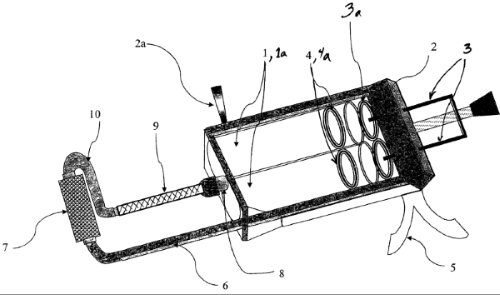When the USPTO rejects patent claims to an invention as being obvious, it often combines two or more prior art references to make the rejection. The rejection may be improper if the combination proposed by the USPTO changes the principle operation of the prior art reference being modified.
The case of Plas-Pak Indus. v. Sulzer Mixpac AG, 600 Fed. Appx. 755 (Fed. Cir 2015) provides an example of this principle. Sulzer asserted that the claims of Plas-Pak’s US Patent 7,815,384 (“Plas-Pak’s Patent”) were obvious in view of a combination of two references, U.S. Patent 4,745,011 (“Fukuta”) and U.S. Patent 3,989,228 (“Morris”). The Plas-Pak’s Patent was directed to a device and method for mixing and dispensing multi-component paints.

Fukuta disclosed a device for mixing two-component coatings but did not disclose two cylindrical cartridges and a mixing gun that were claimed in Plas-Pak’s patent. Morris disclosed two cylindrical cartridges and a mixing gun.
Sulzer proposed to replace Fukuta’s pumps, check valves, stop vales, and escape valves with the two cylindrical cartridges and a mixing gun of Morris. But, the court found that removing those pumps and valves would alter the principle operation of Fukuta. The pumps and valves where essential to the principle operation of Fukuta, which was to prevent back-flow even when the propensity for backflow occurs repeatedly and at high velocity. Fukuta was rife with statement defining the invention as adding stop valves to prevent backflow.
The court concluded that the claims of Plas-Pak’s patent were not obvious because the proposed modification of Fukuta would change its principle operation. A change in the principle operation “is unlikely to motivate a person of ordinary skill to pursue a combination with that reference.”
Therefore, when an obviousness rejection is received, you must closely study the modified reference to determine whether the proposed modification would change its principle operation. If it would, then the rejection may be improper and can be overcome on that basis.